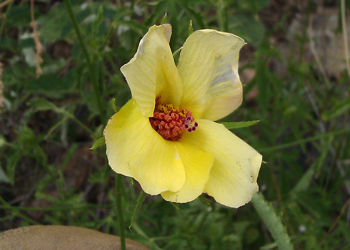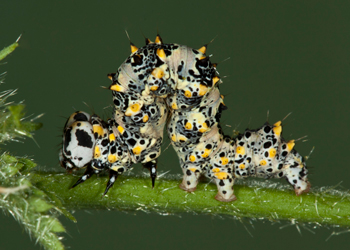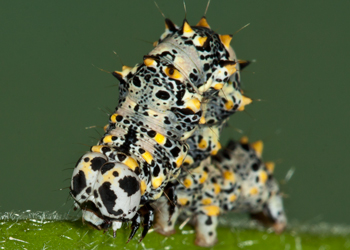Return: HOME >> SPECIES LIST >> SOUTHWEST MOTHS
|
Tarache lucasi (Smith, 1900) |
Bird-Dropping Moth |
MONA# 9148 |
Family: Noctuidae |
|
|
|
|
ATTRIBUTES IN GENERAL |
Classification
KINGDOM: Animalia
PHYLUM: Arthropoda
CLASS: Insecta
ORDER: Lepidoptera
SUPERFAMILY: Noctuoidea
FAMILY: Noctuidae
SUBFAMILY: Acontiinae
TRIBE: Acontiini
Tarache lucasi
|
General Species Description
| ADULT IDENTIFICATION & WINGSPAN: |
| ADULT FOOD: |
| SPECIES RANGE: |
| ADULT FLIGHT TIME: |
| HABITAT: |
| LARVAL IDENTIFICATION & LENGTH: |
| LARVAL HOST: |
| LARVAL EMERGENCE (TIME/SEASON): |
| References: |
|
|
 |
FIELD NOTES for Tarache lucasi : |
|
| Coll. Dates (mm/dd/yyyy) |
|
| Locality & GPS coords |
| Brown Cyn, Baboquivara Mts, Pima Co., AZ |
|
| Elevation (ft) |
4,000' elev |
| Habitat |
|
| Host Plant |
| Hibiscus biseptus ( Arizona Rosemallow) |
|
| Collector(s) |
|
Field Notes & Observations:
| LARVAE: |
I noticed the plant first, then the larvae. The host plant (Hibiscus biseptus) was in bloom with one bright yellow rose giving up its position. Taking a closer look at the plant and blooms, I noticed feeding damage, then finally an ultimate stage larva resting on stem. This species blends in perfectly, from color to morphology, with the key lime & yellow blends of the jagged plant edges. |
| |
- Can you find the larva? (click on image) |
|
|
|
| Larva on Hibiscus biseptus |
|
|
| HOST PLANT: |
Hibiscus biseptus is known to be rare / not as common as Hibiscus coulteri. |
| |
- example of the more commonly observed hibiscus found lower elevation along foothills: |
|
|
|
| Hibiscus coulteri, Mexico |
|
|
| |
Feeding damage from Tarache larvae observed in habitat, on same host plant: |
|
|
|
|
| Ecology Notes:
|
|
| HABITAT |
 |
| Sonoran Desert (Brown Canyon) |
|
|
| |
|
| HOST |
 |
| Hibiscus biseptus ( Arizona Rosemallow) |
|
|
|
REARING / LAB NOTES for Tarache lucasi: |
|
| Voucher No. |
|
| Found as |
| ultimate stage larvae on host |
|
| Food plant used |
Hibiscus biseptus |
| Voucher fate |
|
| Number of days (1st-Ultimate instar) |
|
| Number of days (prepupa) |
|
| Number of days (pupa to eclosion) |
|
Morphology Notes:
| Ovum: |
|
| Larvae: |
| Color: Ultimate stage key lime green with detailed yellow and white markings. |
| Morphology: Pinacular warts from early stages to ultimate stage. Lack prolegs on A3 and A4. A8 hump. |
|
| Pupa: |
|
| Cocoon: |
|
| Adult: |
sexually dimorphic. Male has a broad white stripe along the costa with head and half of thorax white. |
|
Behavior notes:
| Ovum: |
------- |
| Larvae: |
Ultimate stage are very cryptic, mainly because of color and patterns. Larvae curve their body in a loop at rest, further blending in with its host plant. During pre-pupal stage, larvae become light pink with with brighter red, orange and yellow colors A1-A4. |
| Pupa: |
|
| Cocoon: |
|
| Adult: |
|
|
Parasitoids:
| Parasitoids (yes/no) |
No |
| Para. lep voucher: |
N/A |
| Para. species: |
N/A |
| Para. voucher #: |
N/A |
|
| |
Additional Field Collections reared in Lab:
| Larva |
 |
| Penultimate stage larva found on same host plant, Hibiscus biseptus |
|
| Larva |
 |
| Penultimate stage larva found on same host plant, Hibiscus biseptus |
|
|
|
Life History Images (use scroll button) |
|
|

